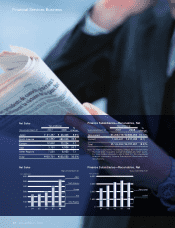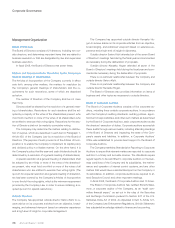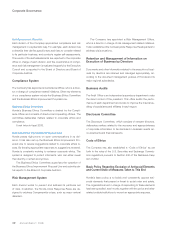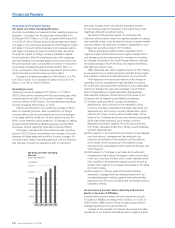Honda 2008 Annual Report Download - page 44
Download and view the complete annual report
Please find page 44 of the 2008 Honda annual report below. You can navigate through the pages in the report by either clicking on the pages listed below, or by using the keyword search tool below to find specific information within the annual report.
Self-Assessment Checklist
Each division of the Company approaches compliance and risk
management in a systematic way. For example, each division has
a checklist that clarifies specific laws and risks to consider related
to its particular business, and conducts regular self-assessments.
The results of the self-assessments are reported to the corporate
officer in charge of each division, and the overall status of compli-
ance and risk management is evaluated regularly by the Executive
Council and is reported to the Board of Directors and Board of
Corporate Auditors.
The Company has appointed a Compliance Officer, who is a direc-
tor in charge of compliance-related initiatives. Other key elements
of our compliance system include the Business Ethics Committee
and the Business Ethics Improvement Proposal Line.
Business Ethics Committee
Honda’s Business Ethics Committee is chaired by the Compli-
ance Officer and consists of directors and operating officers. The
committee deliberates matters related to corporate ethics and
compliance.
It met twice in fiscal 2008.
Business Ethics Improvement Proposal Line
Honda places high priority on open communications in its divi-
sions. It has also set up the Business Ethics Improvement Pro-
posal Line to receive suggestions related to corporate ethics is-
sues. By devising appropriate responses to suggestions received,
Honda is constantly working to enhance corporate ethics. The
system is designed to protect informants, who can either reveal
their identity or remain anonymous.
The Business Ethics Committee supervises the operation of
the Business Ethics Improvement Proposal Line and submits sta-
tus reports to the Board of Corporate Auditors.
Each division works to prevent and address its particular set
of risks. In addition, the Honda Crisis Response Rules are de-
signed to address Companywide crises, such as major natural
disasters.
The Company has appointed a Risk Management Officer,
who is a director in charge of risk management related initiatives.
It also established the Companywide Response Headquarters to
address crisis situations.
Documents and other information related to the execution of busi-
ness by directors are retained and managed appropriately, ac-
cording to the document management policies of Honda and its
major regional subsidiaries.
The Audit Office is an independent supervisory department under
the direct control of the president. This office audits the perfor-
mance of each department and works to improve the internal au-
diting of subsidiaries and affiliates in each region.
The Disclosure Committee, which consists of relevant directors,
deliberates matters related to the accuracy and appropriateness
of corporate information to be disclosed in business results an-
nouncements and financial reports.
The Company has also established a “Code of Ethics” as set
forth in the rules of the U.S. Securities and Exchange Commis-
sion regulations pursuant to Section 406 of the Sarbanes-Oxley
Act of 2002.
Honda’s basic policy is to boldly and consistently oppose anti-
social elements that present a threat to social order and safety.
The organizational unit in charge of responding to these elements
has been specified, and it works together with the police and other
related outside institutions to mount an appropriate response.
Compliance System
Retention and Management of Information on
Execution of Business by Directors
Business Audits
Disclosure Committee
Code of Ethics
Basic Policy Regarding Exclusion of Antisocial Elements
and Current State of Measures Taken to This End
Risk Management System
Corporate Governance
Annual Report 2008
42
























